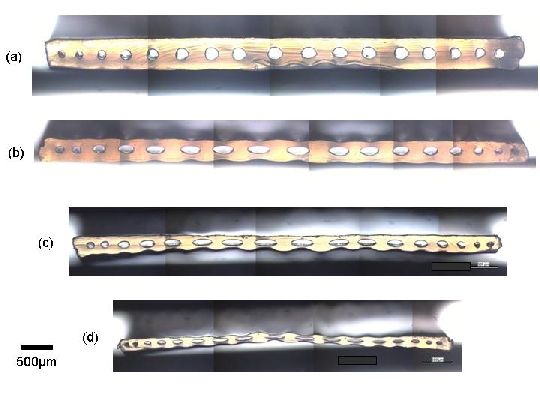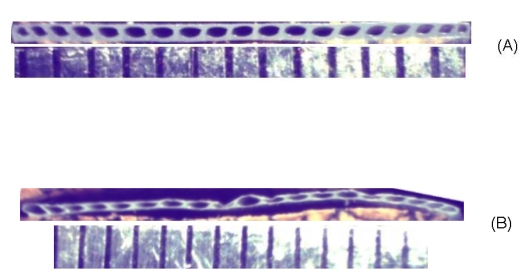MCFs are flexible polymer films containing an embedded array of parallel capillaries running along the film's length; the final shape, number and size of the capillaries can be tailored towards the intended application by manipulation of process conditions and die design and they can be made in most melt-processable polymers. To date, MCFs have been successfully fabricated from poly- (ethylene), poly- (propylene), poly- (vinyl alcohol), high impact polystyrene, poly- (ether urethane) along with various proprietary biopolymers and gums. Typical mean hydraulic diameters of the capillaries range between 60 micron and 600 micron using the standard process; with careful polymer selection and manipulation of process conditions, however, this range can currently be extended from roughly 10 micron to 1 millimetre. The image below shows a typical cross section of an MCF using the latest generation of extrusion tooling containing 19 capillaries.
 |
Simple manipulation of certain key processing conditions can change the morphology of the MCF allowing capillaries to range in size from being circular in cross section through to being elliptical with an aspect ratio in excess of five. The ability to change the shapes of the capillaries in this fashion can be achieved without alteration of the extrusion tooling. This is shown in the image below for a die that used 17 capillaries.
 |
The voidage (defined as the ratio of holes to the polymer) in a standard MCF, as illustrated above, is typically around 15%. Recent process development has discovered a means to increase significantly this level of voidage to typically around 30% to 40%, but under certain experimental conditions voidages in excess of 60% have been manufactured. The cross sections below illustrate the morphology of MCFs with a voidage of (a) 60% and (b) 40%.
 |

